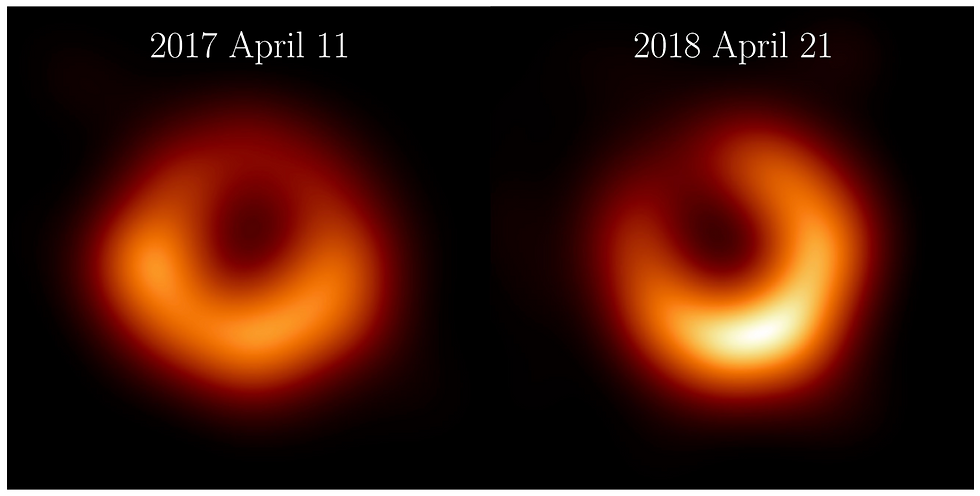
The Event Horizon Telescope collaboration has released new images of the black hole M87*, which is located in a galaxy 55 million light years away from Earth.
The photos were released in paper published in the journal Astronomy & Astrophysics.
The images, derived from 2018 data, show a familiar ring similar to the one observed in 2017. This bright ring encompasses a dark central depression, often referred to as "the shadow of the black hole," in line with predictions from general relativity.
The pictures notably reveal that the brightest part of the ring has shifted by about 30º compared to the 2017 images, aligning with theoretical expectations related to variability in the material around black holes.
"A fundamental requirement of science is to be able to reproduce results," said Dr Keiichi Asada, an associate research fellow at Academia Sinica Institute for Astronomy and Astrophysics in Taiwan, emphasising the significance of the pictures' adherence to 2017 data.
"Confirmation of the ring in a completely new data set is a huge milestone for our collaboration and a strong indication that we are looking at a black hole shadow and the material orbiting around it," he added.
The black hole M87* gained prominence in 2017 when the Event Horizon Telescope captured the first-ever image of a black hole, situated at the centre of the giant elliptical galaxy Messier 87, 55 million light years away from Earth.
The initial image revealed a bright circular ring, with further analysis uncovering details about the magnetic field's geometry and the nature of the plasma around the black hole in polarised light.
Continued observations, including those in 2018, have allowed scientists to delve into black hole astrophysics and test general relativity at a fundamental level.
The recent data analysis, involving eight independent imaging and modelling techniques, supports the stability of the measured diameter of the black hole's ring, reinforcing the conclusion that M87* aligns with the predictions of general relativity.
The Event Horizon Telescope has undergone continuous development, with the inclusion of the Greenland Telescope in 2018 and upgrades to the array, including observing in four frequency bands around 230 GHz. Repeated observations with an improved array are essential to reinforce the findings and enhance confidence in the results.
The brightness peak around the black hole's ring exhibited a significant shift between 2017 and 2018, consistent with predictions related to the turbulent accretion disk around the black hole.
Dr Britt Jeter from Academia Sinica Institute for Astronomy and Astrophysics noted that this shift was anticipated, providing a means to test theories regarding the magnetic field and plasma environment around the black hole.






























Comentários